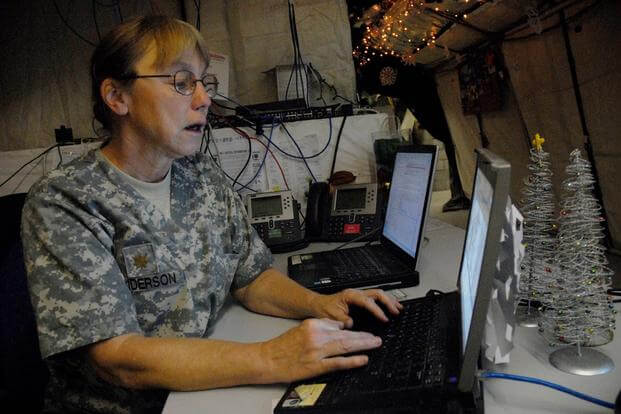The Defense Department will expand its new electronic medical records system to four additional locations in September -- a rollout Pentagon officials say will be easier given the lessons learned at test-bed facilities during the past two years.
Beginning Sept. 7, the MHS Genesis system will go live at Mountain Home Air Force Base in Idaho, as well as Travis Air Force Base, Naval Air Station Lemoore and the Army Health Clinic Presidio in California.
The system previously was tested at four sites in Washington State beginning in 2017:
Fairchild Air Force Base, Naval Health Clinic Oak Harbor, Naval Hospital Bremerton, and Madigan Army Medical Center. It remains active at those locations.
Defense Health Agency officials told reporters Tuesday during a press call that the initial test of the system, built by Cerner Corp., revealed several issues, to include needing to upgrade the information technology infrastructure, prep the staff for the change and ensure staff was properly trained to use the new system.
The problems have been addressed and will be implemented in the next phase, said William Tinston, the program executive officer for Defense Healthcare Management Systems.
"We changed the training strategy. We didn't get that right the first time," Tinston said. "We have created a change management process, and the other thing is infrastructure. We now have six months prior to going live at a site to have the infrastructure updated."
The Defense Health Agency also has expanded computer training on the system and instituted a peer-to-peer training initiative to ensure that users are comfortable, added Maj. Gen. Lee Payne, the Defense Health Agency's MHS Genesis Functional Champion.
MHS Genesis will include a portal through which patients view their health information online, message their providers and access test results -- much like the current Tricare Online patient portal. It also will feature the option to request prescription refills online.
Related: Questions Remain as DoD Gets Ready to Cut 18,000 Medical Personnel
But the new system won't initially include old health record information. According to officials, only a patient's basic health information -- allergies, medications, personal data -- will be initially included in the new record.
Doctors will have access to the historic records using the Joint Legacy Viewer, accessible through MHS Genesis, but DoD is still weighing how it will integrate old and new records.
"We are looking and evaluating what our strategy is to bring the remainder of the data in," Payne said.
The VA announced Monday that it has transferred 23.5 million veteran health records to Cerner, part of its transition to the new electronic medical records system. This included 78 billion pieces of information, such as lab results, prescriptions, diagnoses and procedures and other data from "both living and deceased veterans," according to a release.
"For decades, VA and DoD have been struggling to achieve interoperability and seamlessly share patient records between our health systems -- placing an unfair burden on our veterans and their families," VA Secretary Robert Wilkie said in a release. "No veteran, family member or caregiver should have to carry boxes of paper, medical and service records around. This data migration is the first step to solving that problem for good."
But while VA has transferred its data, DoD has opted not to undergo the mass data dump. Instead, officials are watching how well VA's effort goes.
"The method DoD is using is actually the standard commercial practice for Cerner," Tinston said. "What they are doing in the VA is a different approach, and we are watching how that works and if it is effective, it may be the way that we get the rest of our data into the environment."
MHS Genesis officials also want to ensure that the system remains standardized so its software remains up to date and it can be used in the same way by any provider anywhere.
"We don't want to customize the record because one of the great advantages of this product is, we get regular updates," Payne said.
Seven more sites are expected to go online next June: Nellis Air Force Base, Nevada, Fort Irwin, the Marine Corps Air Ground Combat Center, and Edwards, Beale, Los Angeles and Vandenberg Air Force bases in California.
The remainder will be transformed within the next four years.
The future system won't look like it does now or even be the same as the one rolled out in September, officials said, since the product is being updated continually.
"From February 2017 until we went live [earlier this year], the record we are going to deliver on Sept. 7 is markedly different ... we've taken all the regular upgrades and improved the configuration, and we are doing that each and every day," Payne said.
-- Patricia Kime can be reached at Patricia.Kime@Miltiary.com. Follow her on Twitter at @patriciakime.













